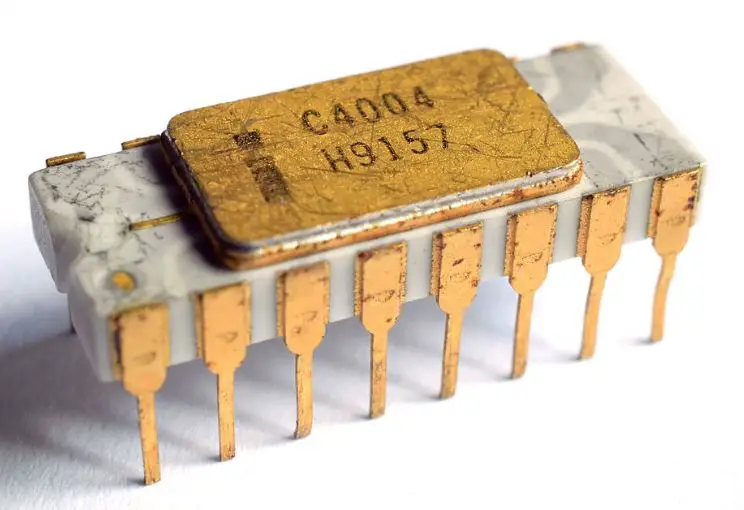Tutorials
Learn More
The first Processor
Do you know who first built the foundation for the modern computer industry? Who has made it possible for us to live in a connected world where we can access information and communicate with each other from anywhere in the world.. Let’s get started!”

Source: Wikipedia
“Before we explore the first processor in history, let’s take a quick journey back in time. Processors, also known as central processing units (CPUs), are essential components in modern computing devices. They serve as the “brain” of the computer and are responsible for executing instructions and performing calculations. Here are some of the primary uses of processors:But where did it all begin?”
“The story begins in the mid-20th century when the digital age was dawning. Computers were massive, room-filling machines that relied on vacuum tubes and mechanical components. The need for smaller, faster, and more efficient computing led to the development of the first processor.”
Intel 4004
“In 1971, the world witnessed a revolutionary moment in the world of computing with the release of the Intel 4004.
Developed by Intel Corporation, the 4004 was the world’s first microprocessor.”
Features of Intel 4004
“This tiny chip, measuring only 1/8th of an inch by 1/6th of an inch, packed a punch. It had 2,300 transistors, which was groundbreaking at the time. It could perform around 60,000 operations per second, which was a major leap in computing power.”
Here are more details about the Intel 4004 microprocessor:
1. Invention and Introduction:
- The Intel 4004 is widely recognized as the world’s first microprocessor.
- It was developed by Intel Corporation and introduced in 1971.
- Architectural Features:
- The Intel 4004 was a 4-bit microprocessor, meaning it processed data in 4-bit chunks.
- It had a 12-bit address bus, allowing it to access up to 4,096 memory locations.
- The 4004 operated on a single +15V power supply.
- Transistor Count:
- The microprocessor contained a total of 2,300 transistors, which was a considerable feat of integration at the time.
- Clock Speed and Performance:
- The Intel 4004 operated at a clock speed of approximately 740 kHz (kilohertz).
- It was capable of executing approximately 46,000 instructions per second (IPS).
- Instruction Set:
- The 4004 had a limited instruction set consisting of 46 instructions.
- These instructions allowed it to perform basic arithmetic and logical operations.
- Applications:
- Initially designed for calculators, the Intel 4004 found applications in various devices, including early handheld calculators.
- It was used in traffic light controllers, cash registers, and simple control systems.
- Historical Significance:
- The Intel 4004 is historically significant as it marked the beginning of the microprocessor era, revolutionizing computing.
- It enabled the development of smaller, more affordable, and more powerful computing devices.
- Legacy:
- The success of the Intel 4004 paved the way for subsequent microprocessor developments by Intel, including the 8008 and 8080 processors.
- It played a pivotal role in shaping modern computing technology.
- Collectibility:
- Due to its historical importance, the Intel 4004 has become a sought-after collector’s item, and vintage 4004-based systems are of interest to enthusiasts.
- End of Production: – Intel ceased production of the 4004 in the early 1980s as it was succeeded by more advanced microprocessors.
The Intel 4004’s introduction was a monumental moment in the history of computing, representing the transition from large, room-filling computers to compact and powerful microprocessors that underpin modern computing devices.
Conclusion
The Intel 4004’s impact was transformative. It took us in a new era of computing, making technology more accessible, affordable, and versatile. Its legacy continues to influence the way we live, work, and interact with technology today.
Semiconductor Industry